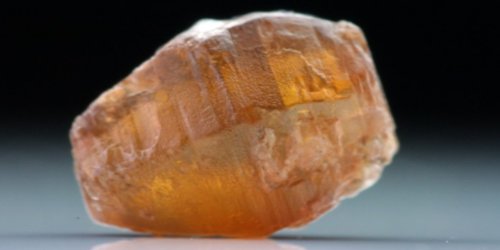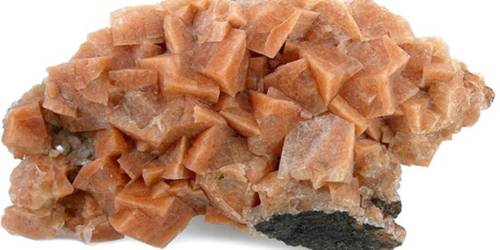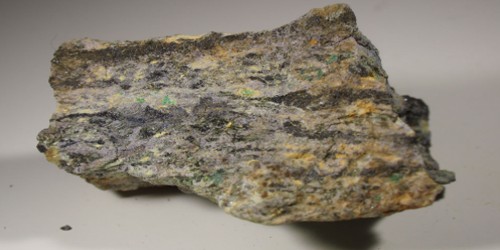Hibonite [(Ca, Ce)(Al, Ti, Mg)12O19] is a very rare gem. It is a calcium aluminate mineral found in carbonaceous chondrite meteorites. Stones which are large enough or transparent enough for faceting are very sparse. It is named after Paul Hibon, a French prospector who discovered the mineral in Madagascar.
A very rare gem, Hibonite was discovered in Madagascar by Paul Hibon, a French prospector. It is slightly radioactive.
General Information
- Category: Oxide minerals
- Formula: [(Ca, Ce)(Al, Ti, Mg)12O19]
- Crystal system: Hexagonal
- Crystal class: Dihexagonal dipyramidal (6/mmm)

Fig: Hibonite
Properties
Hibonite is a brownish black mineral with a hardness of 7.5-8.0 and a hexagonal crystal structure. It is rare but is found in high-grade metamorphic rocks on Madagascar. Some presolar grains in primitive meteorites consist of hibonite.
- Color: Brownish black to black; reddish brown in thin fragments; blue in meteorite occurrence
- Crystal habit: Prismatic platy to steep pyramidal crystals
- Fracture: Subconchoidal
- Mohs scale hardness: 7.5 – 8
- Luster: Vitreous
- Streak: reddish brown
- Diaphaneity: Semitransparent
- Specific gravity: 3.84
- Optical properties: Uniaxial (-)
Occurrence: In metamorphosed limestone, pyroxenite, gneiss, and granulite of the amphibolites to granulite facies; also alluvial. A common accessory in Ca-Al-rich inclusions in some carbonaceous chondrites.
Hibonite also is a common mineral in the Ca-Al-rich inclusions (CAIs) found in some chondritic meteorites. It is closely related to hibonite-Fe (IMA 2009-027, ((Fe, Mg)Al12O19)) an alteration mineral from the Allende meteorite.
Association: Calcic plagioclase, corundum, spinel, thorianite, titanite (Esiva, Madagascar); anorthite, grossular, titanite, zoisite, clinozoisite (Mahenge, Tanzania); vesuvianite, hercynite, corundum, andalusite, kyanite, diopside, rutile, titanite, magnetite (Shoriya Mountains, Russia).
Information Source:
















